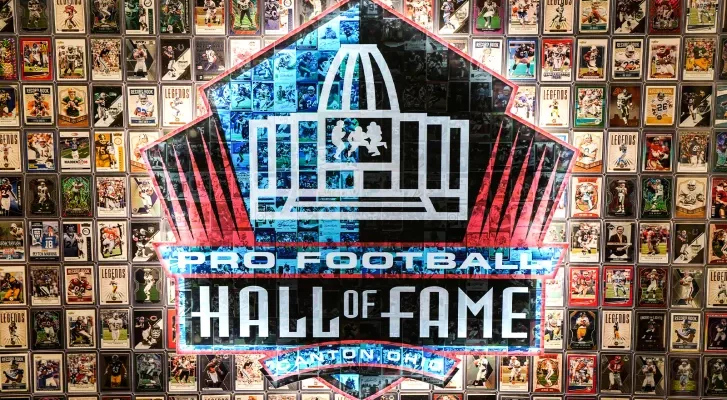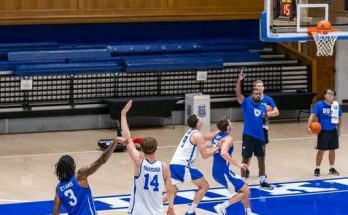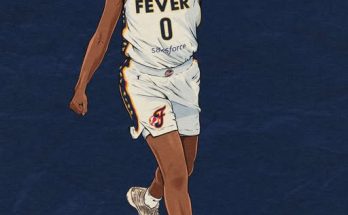When fans think of NFL royalty, franchises like the Green Bay Packers and the Pittsburgh Steelers immediately come to mind. These storied teams are synonymous with greatness, tradition, and an unwavering commitment to excellence. From Vince Lombardi’s legacy in Green Bay to the Steel Curtain’s dominance in Pittsburgh, these organizations have shaped the very fabric of American football. Yet, despite their grandeur, neither the Packers nor the Steelers hold the distinction of having produced the most Pro Football Hall of Famers. That honor belongs to a team often celebrated but rarely given its due when discussing historical dominance—the Chicago Bears.
The Chicago Bears have been a part of the NFL since the league’s inception in 1920, originally founded as the Decatur Staleys. George Halas, a pioneer of the sport, transformed the team into a juggernaut that would set the tone for generations of football. Halas wasn’t just a coach or owner—he was a visionary. Under his leadership, the Bears became a model of success, setting records and establishing a legacy that few teams could match. Over the years, they’ve produced more Hall of Fame talent than any other franchise, with 30-plus players enshrined in Canton, Ohio.
The Bears’ Hall of Fame roster reads like a who’s who of football legends. Red Grange, known as “The Galloping Ghost,” helped legitimize professional football in its early days with his incredible speed and national fame. Bronko Nagurski was one of the most dominant two-way players the game had ever seen, and his bruising style became the prototype for generations of fullbacks and linebackers. These early Bears didn’t just play football—they *defined* it.
In the 1960s and ‘70s, players like Dick Butkus and Gale Sayers redefined what it meant to be elite at their positions. Butkus, with his relentless, ferocious tackling, became the gold standard for middle linebackers. He was so dominant, so feared, that offensive coordinators would design entire game plans around avoiding him. Sayers, meanwhile, dazzled crowds with his electric runs and silky-smooth moves, accomplishing in a short career what many could not in a decade.
The Bears’ impact on the NFL doesn’t stop with individual players—it extends to coaching, innovation, and culture. Mike Ditka, the hard-nosed tight end-turned-coach, won Super Bowl XX with one of the most dominant defenses in NFL history. That 1985 Bears team wasn’t just good; it was transcendent. With Hall of Famers like Richard Dent, Dan Hampton, Mike Singletary, and Walter Payton leading the charge, the Bears crushed opponents and danced their way into pop culture history. “The Super Bowl Shuffle” wasn’t just a novelty—it was a symbol of confidence and charisma rarely seen in the league.
Walter Payton, perhaps the most beloved Bear of all time, redefined perseverance, humility, and greatness. Nicknamed “Sweetness,” Payton’s legacy transcends stats, though his numbers were phenomenal. With over 16,000 rushing yards, he was the NFL’s all-time leading rusher upon retirement, but it was his leadership, toughness, and versatility that made him an icon. He could run, block, pass, and inspire like few ever could. His enshrinement in Canton was not just expected—it was inevitable.
What makes the Bears’ Hall of Fame dominance even more impressive is its span across generations. Unlike some franchises that saw their stars concentrated in a specific era, the Bears have consistently produced elite talent from the 1920s to the present. Players like Brian Urlacher, inducted in 2018, continued the linebacker legacy that began with Butkus and Mike Singletary. Known for his speed, intelligence, and leadership, Urlacher bridged the old-school toughness of previous Bears with the modern NFL.
The breadth and depth of the Bears’ Hall of Fame presence speak volumes. From offensive powerhouses to defensive enforcers, special teams contributors to coaching masterminds, Chicago has done it all. George Halas himself is enshrined in the Hall as both a coach and a contributor, and his shadow looms large over the sport. The Hall even named one of its highest honors—the George Halas Award—after him, solidifying his place in football’s sacred halls.
But why haven’t the Bears received more attention for this feat? In today’s media landscape, recent success often outweighs historical significance. The New England Patriots, Kansas City Chiefs, and San Francisco 49ers dominate modern conversations, thanks in large part to recent Super Bowl appearances and all-time great quarterbacks. In contrast, the Bears have struggled with consistency since their 1985 championship, with only sporadic playoff success in the ensuing decades.
Still, their historical contribution cannot be dismissed. The Pro Football Hall of Fame isn’t just a celebration of current stars—it’s a museum of greatness across the ages. And no team has sent more ambassadors to that shrine than the Bears. It’s a testament not just to talent, but to scouting, development, and institutional pride. These players were not flukes; they were the product of a system that valued toughness, innovation, and excellence.
Another key element of Chicago’s Hall of Fame success is its defense-first identity. From the “Monsters of the Midway” to the “46 Defense,” the Bears have always placed a premium on stopping opponents in their tracks. That commitment to defense has birthed some of the most feared units in league history, and many of their members—Hampton, Singletary, Dent, Butkus, Urlacher—have been rightfully immortalized.
Even as the league has shifted to a more offensive style, the Bears’ legacy endures. It’s evident in the way players talk about donning the navy and orange. Being a Bear means something. It means grit. It means legacy. It means pressure and pride. Rookies feel the weight of that history when they walk into Halas Hall. The franchise’s Hall of Fame alumni are not ghosts of the past—they’re benchmarks to live up to.
Compare this to teams like the Packers and Steelers—no doubt, their Hall of Famers are legendary. Green Bay gave us Bart Starr, Brett Favre, and Reggie White. Pittsburgh produced a string of Hall of Famers from its 1970s dynasty: Terry Bradshaw, Franco Harris, Jack Lambert, Mel Blount, and more. But in sheer numbers, neither of these vaunted franchises have matched the Bears. They may have more rings, but they don’t have more busts in Canton.
Some argue that longevity helps the Bears—after all, they’ve been around longer than most. That’s fair, but longevity alone doesn’t guarantee greatness. The Arizona Cardinals have been around nearly as long and don’t come close. It takes more than time; it takes vision, execution, and sustained excellence. The Bears may have only one Super Bowl title to their name, but their influence on the game transcends championships.
The NFL is constantly evolving, and as more players retire, Hall of Fame rosters will grow. But for now, the Bears stand atop the mountain, a monument to football greatness in its purest form. Even in lean years, they remain a franchise rooted in legacy, with past greatness casting a long shadow over the present. While the media may focus on flashier teams, football historians know the truth: No one has sent more of its best to Canton than the Chicago Bears.
Perhaps one day, another franchise will catch up. Maybe the Steelers will continue producing elite defenders, or the Cowboys will parlay their market size into more busts. But as it stands today, the crown belongs to Chicago. In a league that thrives on parity and unpredictability, the Bears’ legacy of greatness is one of the few constants.
The next time you visit the Pro Football Hall of Fame and stroll past those bronze busts, take a moment to count how many of them wear the Bears’ navy and orange. It’s not a coincidence. It’s not a fluke. It’s the result of a century-long commitment to football excellence. And that, more than anything, makes the Chicago Bears the gold standard of NFL history.



